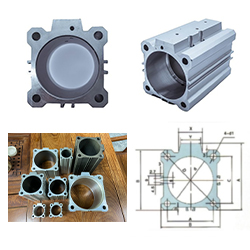By 2020, investing in a home solar electricity system had become a no-brainer for several compelling reasons. The most significant factor driving this trend is the steep decline in the cost of solar equipment, including panels, which has drastically reduced the initial capital outlay required. This affordability has made solar energy a viable option for homeowners looking to reduce their electricity bills.
In addition to the price drop, the Indian government has introduced substantial subsidies to encourage solar adoption. These subsidies vary by region, with special category states such as those in the Northeast, Jammu & Kashmir, Uttarakhand, Himachal Pradesh, Sikkim, and Lakshadweep eligible for up to 70% assistance. For grid-connected systems, where excess electricity can be fed back into the grid, the Ministry of New and Renewable Energy (MNRE) provides a higher subsidy than the standard 30%.
Beyond subsidies, there are other incentives, such as generation-based incentives, which can further sweeten the deal. Banks have also been encouraged to view solar installations as home improvements, offering loans at rates similar to traditional home loans. Many public sector banks have communicated this policy shift to their branches, making it easier for customers to access financing.
While the process may seem straightforward, obtaining the subsidy can sometimes take longer than expected due to administrative delays. It’s important to note that the MNRE requires the use of domestically produced solar panels to qualify for the subsidy. Once you’ve chosen a vendor, they’ll assess your location and complete the setup within a few days. Leading companies like Genus can guide you through every step, ensuring you receive high-quality equipment. As a rule of thumb, you’ll need around 10 square meters of unshaded roof area for a 1-kilowatt installation, depending on factors such as module efficiency, local weather conditions, and solar radiation levels. Your appliance load will determine the appropriate size for your system.
But what if your roof lacks sufficient space or is shaded? Ground-mounted options are available to address these challenges. Before committing to a solar installation, you might wonder how long it will take for your investment to pay off. For instance, a study conducted in Madhya Pradesh found that, under typical weather conditions and with the 30% central government subsidy, a 5-kilowatt system breaks even in 4-5 years, while a 3-kilowatt system takes about 7 years. Even without subsidies, the payback period is relatively short—around 6 years for a 5-kilowatt system and 7 years for a 3-kilowatt system.
When choosing between an off-grid and grid-connected system, there are trade-offs to consider. An off-grid system is ideal for areas prone to frequent and prolonged power outages, providing uninterrupted electricity. However, it requires a battery storage system to store excess power for cloudy days or nighttime usage, adding to the overall cost and necessitating regular battery replacements. On the other hand, a grid-connected system doesn’t require batteries since the utility grid acts as your backup. With net metering, you can sell excess power back to the grid, effectively creating a credit balance. This setup works best in areas with stable electricity supply but isn’t suitable for regions with load shedding.
If upfront costs remain a concern despite the short payback period, you could opt for a Renewable Energy Service Company (RESCO). These companies handle both the installation and maintenance costs, charging you a fixed rate per unit consumed under a Power Purchase Agreement. This model allows you to enjoy solar energy without bearing the initial financial burden, while the RESCO benefits from selling surplus power to the utility.
For more information and expert guidance, reach out to Genus. Investing in solar energy not only helps you save money but also contributes to a cleaner environment, making it a win-win proposition for both you and future generations.
QGY Pneumatic Cylinder Barrel
Aluminum Pneumatic Cylinder Tube
In-House Lab Testing Facility
100% Quality Inspected Before Delivery
Quality Standards Certificates Included
Consistent Inspection on Manufacturing Process

QGY cylinder is a thin oil-free lubrication cylinder mainly used in situations where space saving is required. Here are some basic information about QGY cylinders:
characteristic:
No oil lubrication: This means that no additional lubrication system is required during operation, simplifying maintenance work.
Thin design: This design allows the cylinder to be installed in a limited space.
Material: Usually made of aluminum alloy, it has good strength and weight ratio.
Action mode: There are both single acting and double acting versions to choose from.
Specification and model: According to different requirements, there are different cylinder diameters and stroke combinations, such as QGY 205, QGY 255, QGY 325, QGY 405, QGY 5010, QGY 6310, QGY 8010, QGY 10010, QGY 125 * 10, etc.
Application scenarios:
Automation equipment: suitable for automated production lines that require compact cylinders.
Precision instruments: suitable for precision mechanical equipment that requires precise control of motion.
Supplier Information:
Some suppliers provide QGY series cylinders, such as Zhaoqing Shenye Instrument Factory Co., Ltd. and Zhaoqing Fangda Manufacturer. These suppliers usually provide detailed product specifications and technical parameters, as well as after-sales service.
QGY Pneumatic Cylinder Barrel,QGY Pneumatic Cylinder Tube,QGY Pneumatic Cylinder Tubing,QGY Pneumatic Cylinder Pipe
Foshan Weiyingjia Technology Co., Ltd , https://www.wyspneumatic.com
